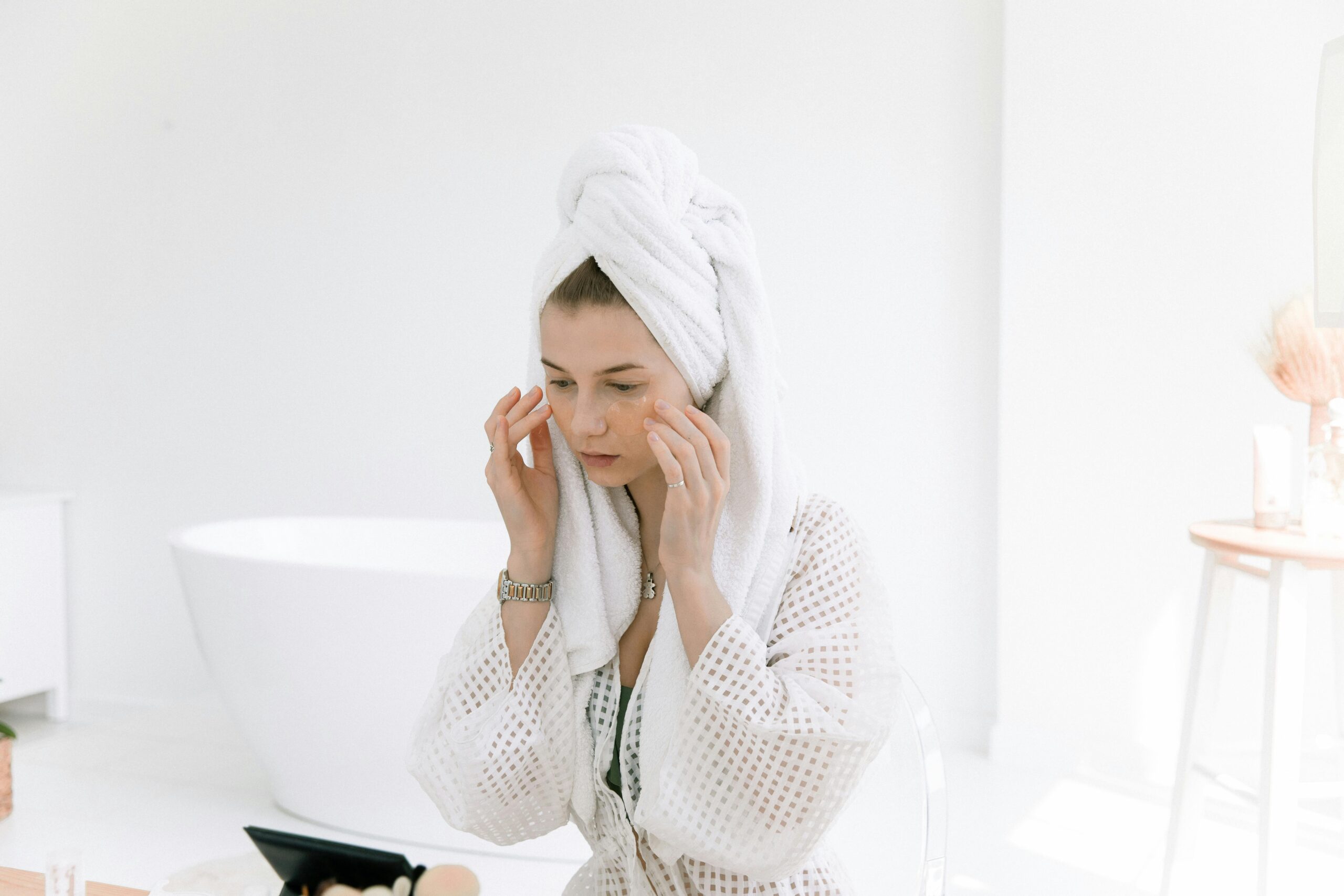Skin Acids: The Most Notable Types, Benefits, and the Correct Way to Use Them

Incorporating acids into your skincare routine for exfoliation has become an essential step for achieving better results and a more radiant glow. However, not every acid is suitable for your skin. It is crucial to understand how each acid interacts with your skin and which ones can truly benefit it, as using the wrong acid improperly can harm your skin. Here is a guide to the most common acids in the world of skincare.
1- Salicylic Acid
What is Salicylic Acid?
A type of beta hydroxy acid (BHA), it is known for its exfoliating properties and penetrates deep into the skin without clogging pores.
Benefits of Salicylic Acid:
- Helps eliminate pimples, acne, and blackheads.
- Penetrates pores and prevents clogging.
- Removes dead skin cells.
- Reduces excess oil production in the skin.
- Alleviates skin inflammation and redness.
When should Salicylic Acid be applied?
In the morning and evening, 3 times a week.
Salicylic Acid Concentration:
Choose a product that contains 1% or 2% salicylic acid, no more.
At what age can you start using Salicylic Acid?
At the age of 20.
Which skin types is Salicylic Acid suitable for?
Oily skin and combination skin.
2- Mandelic Acid
What is Mandelic Acid?
Mandelic acid falls under the category of alpha hydroxy acids (AHAs). Its formula is derived from bitter almonds and it gently exfoliates the skin.
Benefits of Mandelic Acid:
- Acts as an exfoliant to remove dead skin cells.
- Improves skin appearance by boosting collagen production.
- Helps delay the appearance of wrinkles and fine lines, considered an anti-aging ingredient.
- Regulates oil production, fights pore congestion, and reduces inflammation.
- Helps reduce pimples caused by excess oil secretion.
- Works to lighten dark spots to provide the skin with necessary freshness.
When should Mandelic Acid be applied? In the evening, once or twice a week.
Mandelic Acid Concentration:
For beginners or those with sensitive skin, it is preferable to start with a product containing 5% mandelic acid. Then, you can transition to concentrations ranging from 10% to 15% if there is no discomfort.
At what age can you start using Mandelic Acid?
At the age of 15.
Which skin types is Mandelic Acid suitable for?
It is suitable for all skin types, but it is particularly a great choice for sensitive skin due to its gentle formula.
Note: It’s important not to mix any exfoliating ingredients with AHA and BHA acids in the same routine, such as retinol, because combining these ingredients can cause excessive redness and sensitivity. If you want to use these ingredients together in your skincare routine, it’s better to apply them on different days and times.
3- Glycolic Acid
What is Glycolic Acid?
It is a natural ingredient extracted from sugarcane, belonging to the alpha hydroxy acids (AHAs) group. It has the smallest molecular size in this group, which allows it to penetrate the skin and reach its depths.
Benefits of Glycolic Acid:
- Helps cleanse the skin deeply and rid it of accumulated dirt.
- Provides the skin with necessary moisture.
- Tightens the skin and reduces the appearance of enlarged pores.
- Helps remove excess dirt and oil.
- Contributes to treating acne and blackheads.
- Stimulates collagen production, which helps treat fine lines and wrinkles.
- Treats skin discoloration and dark spots, promoting an even skin tone.
When should Glycolic Acid be applied? In the evening, once or twice a week.
Glycolic Acid Concentration: Start with a product containing a low concentration of glycolic acid, around 8% to 10%, and gradually increase the concentration based on your skin’s tolerance.
At what age can you start using Glycolic Acid?
At the age of 20.
Which skin types is Glycolic Acid suitable for?
All skin types.
4- Lactic Acid
What is Lactic Acid?
It is a type of alpha hydroxy acid (AHA), extracted from milk, and acts as a gentle exfoliant on the skin.
Benefits of Lactic Acid:
- Helps eliminate dirt and dead skin cells.
- Contributes to evening out skin tone and reducing dark spots.
- Works to provide the skin with radiance and freshness.
When should Lactic Acid be applied?
In the evening, 2 to 3 times a week.
Lactic Acid Concentration:
For beginners, it’s preferable to use a product containing 10% lactic acid, then you can gradually increase the concentration once your skin becomes accustomed to it.
At what age can you start using Lactic Acid?
At the age of 15.
Which skin types is Lactic Acid suitable for?
All skin types.
5- Azelaic Acid
What is Azelaic Acid?
It is found in wheat and barley grains, and it is an acid that kills bacteria causing acne and rosacea.
Benefits of Azelaic Acid:
- Treats acne and its marks.
- Calms skin redness caused by rosacea.
- Exfoliates the skin and helps lighten its tone.
- Helps eliminate skin discoloration and promotes an even skin tone.
When should Azelaic Acid be applied? Apply in the morning and evening, daily.
Azelaic Acid Concentration: Opt for a product containing at least 10% azelaic acid, and it can also be applied in concentrations ranging from 15% to 20%.
At what age can you start using Azelaic Acid? At the age of 15.
Which skin types is Azelaic Acid suitable for? All skin types, especially very sensitive skin and those suffering from rosacea.
6- Kojic Acid
What is Kojic Acid?
It is a type of alpha hydroxy acid (AHA), a chemical compound extracted from fungi. It is also produced through the fermentation of certain Asian foods like soy sauce and others.
Benefits of Kojic Acid:
- Helps lighten dark spots.
- Fights signs of aging such as wrinkles and fine lines.
- Helps combat and prevent the appearance of skin and nail fungi.
When should Kojic Acid be applied? Apply in the morning and evening, daily.
Kojic Acid Concentration: It is recommended to use products containing 1% or less Kojic Acid to avoid harshness on the skin.
At what age can you start using Kojic Acid? At the age of 20.
Which skin types is Kojic Acid suitable for? All skin types.
Note: Products containing acids come in various forms such as face washes, creams, or serums. Your choice should depend on your skin type and the goals you want to achieve. For example, if you are looking for quick results, serums may be preferable. Nonetheless, it’s best to consult your dermatologist to determine the most suitable product for you.
7- What about Hyaluronic Acid?
What is Hyaluronic Acid?
Despite its name, this ingredient does not exfoliate and does not belong to the categories of basic acids. It is a natural substance present in the body and has many benefits.
Benefits of Hyaluronic Acid:
- Helps moisturize the skin.
- Contributes to achieving radiant and firmer skin.
- Improves skin appearance by boosting collagen production.
When should Hyaluronic Acid be applied? Apply in the morning and evening, daily.
Hyaluronic Acid Concentration: It’s important to choose products with a concentration of hyaluronic acid between 1% to 2%.
At what age can you start using Hyaluronic Acid? You can start using it from your mid to late twenties.
Which skin types is Hyaluronic Acid suitable for? It is suitable for all skin types.



